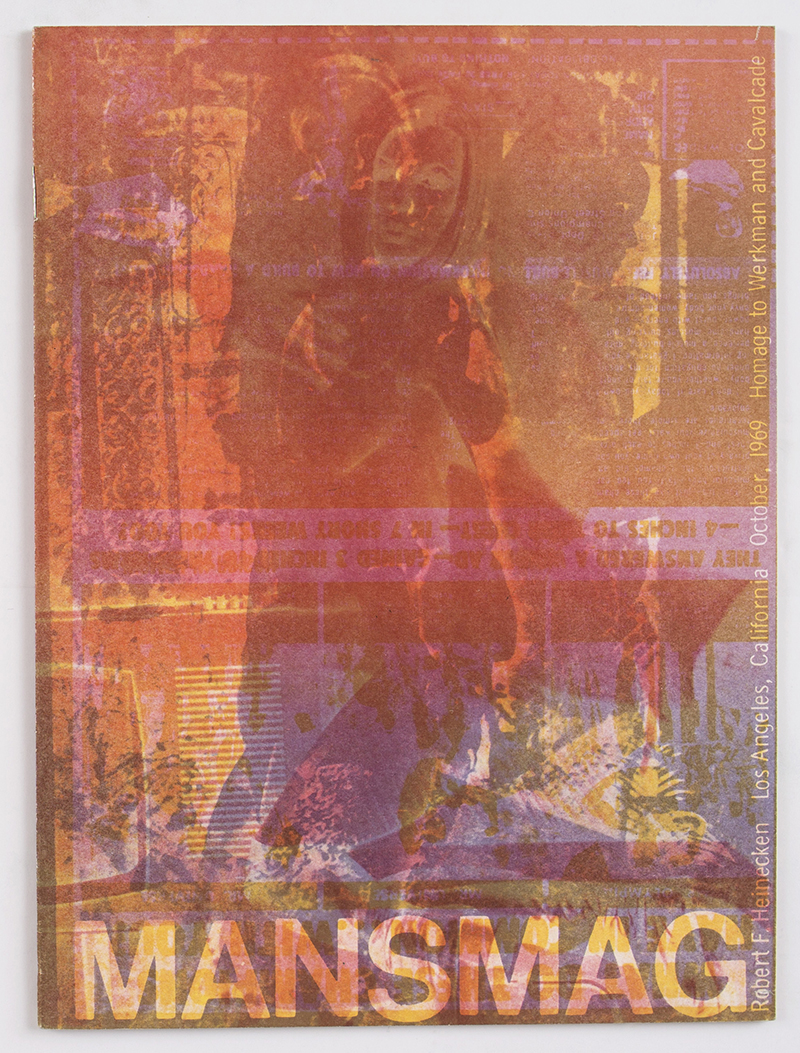Robert Heinecken, the self-described “para-photographer” who dedicated his life to both art and teaching, starting UCLA’s renowned photography program more than 40 years ago, will be the subject of an upcoming show at the Hammer Museum.
“Robert Heinecken: Object Matter,” was organized by curator Eva Respini, with Drew Sawyer, Beaumont and Nancy Newhall Curatorial Fellow, department of photography, The Museum of Modern Art in New York. The Hammer’s presentation of the show, which opens Oct. 3 and runs until Jan. 18, 2015, was put together by Cynthia Burlingham, deputy director, curatorial affairs, and Leslie Cozzi, curatorial associate, Grunwald Center for the Graphic Arts.
This show is the first retrospective of Heinecken’s work since his death in 2006. The exhibition covers four decades of the artist’s remarkable practice, from the early 1960s through the late 1990s. Heinecken described himself as a “para-photographer,” because his work stood “beside” or “beyond” traditional ideas associated with photography. He was a self-taught photographer and pioneer in the postwar Los Angeles art scene. He worked across multiple mediums, including photography, sculpture, video, printmaking, and collage. Culling images from newspapers, magazines, pornography, and television, he recontextualized them through collage and assemblage, double‐sided photograms, darkroom experimentation, and rephotography. Although Heinecken was rarely behind the lens of a camera, his photo‐based works question the nature of photography and radically redefine the perception of it as an artistic medium. His works explore themes of commercialism, Americana, kitsch, sex, the body, and gender. In doing so, they also expose his obsession with popular culture and its effects on society, and with the relationship between the original and the copy.
In addition to his influential artistic work, Heinecken established the photography program at UCLA in 1963, where he taught until 1991.

“This survey exhibition is a homecoming for an artist and professor whose experimental approach had a profound influence on many Southern California artists, including a generation of students who went on to become major artists themselves,” Burlingham said. “In the late 1960s, Heinecken was responsible for starting the photography collection at UCLA that now belongs to the Grunwald Center for the Graphic Arts, which makes this exhibition especially meaningful for us.”
Heinecken began making photographs in the early 1960s. The antithesis of the fine-print tradition exemplified by West Coast photographers Ansel Adams and Edward Weston, who photographed landscapes and objects in sharp focus and with objective clarity, Heinecken’s early work is marked by high contrast, blur, and under- or overexposure, as seen in “Shadow Figure” (1962) and “Strip of Light” (1964).
In the mid-1960s he began combining and sequencing disparate pictures, as in “Visual Poem/About the Sexual Education of a Young Girl” (1965). The female nude is a recurring motif in many works, including a group of three-dimensional sculptures and puzzles made from photographs mounted onto individual blocks.
Heinecken’s groundbreaking suite “Are You Rea” (1964–68) is a series of 25 double‐sided photograms made directly from more than 2000 magazine pages drawn from publications such as Life, Time, and Woman’s Day. Representative of a culture that was increasingly commercialized, technologically mediated, and suspicious of established truths, “Are You Rea” cemented Heinecken’s interest in the multiplicity of meanings inherent in existing images and situations. He continued to produce and surreptitiously circulate various “revised” or “compromised” periodicals well into the 1990s.
Although Heinecken was prolific, “Robert Heinecken: Object Matter” is a focused presentation of his major works, emphasizing early experiments that investigated technique and materiality and sought to destabilize the very definition of photography. Heinecken’s eclectic and irreverent body of work transformed American photography from an instrument of documentary reportage to a tool for the interrogation and deconstruction of social norms. His innovative and diverse experimentation resonates deeply with current artistic practice, and his prescient exploration of the definition of photography, the possibilities of appropriation, and the limitations of artistic categories is as relevant today as it was 50 years ago.
As part of the exhibition, there will be special tours on Sunday, Oct. 12, led by Burlingham and Cozzi, who organized the exhibition’s presentation at the Hammer. On Nov. 4, the 45-minute film “Heinecken Explains Heinecken” will screen. Finally, on Dec. 9, MoMA’s Respini, the exhibition curator, will moderate a panel titled “Heinecken and Feminism.”
Visit the Hammer’s website for more information and to read the complete press release.





